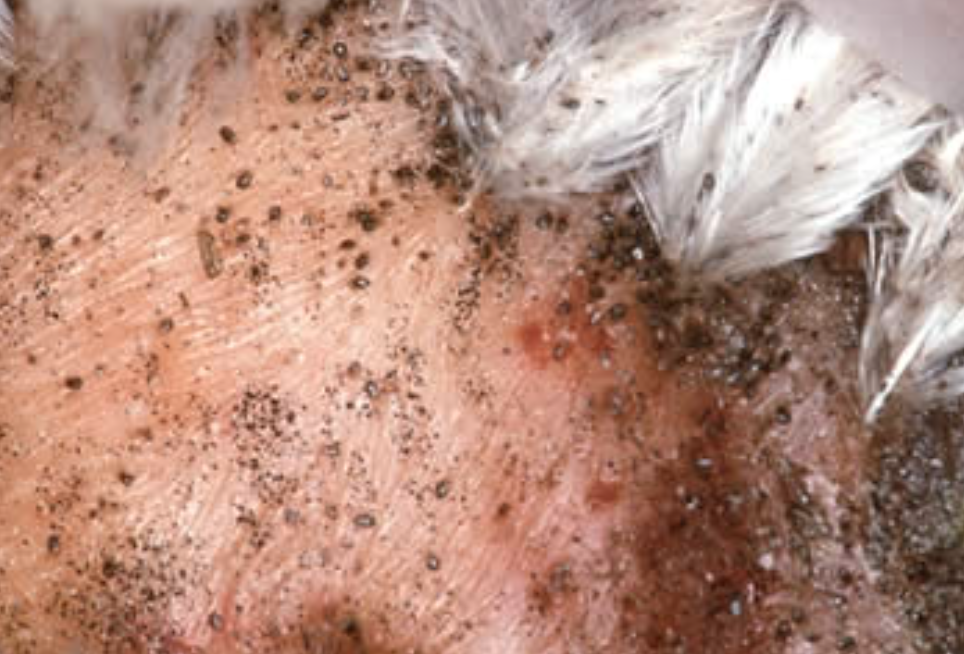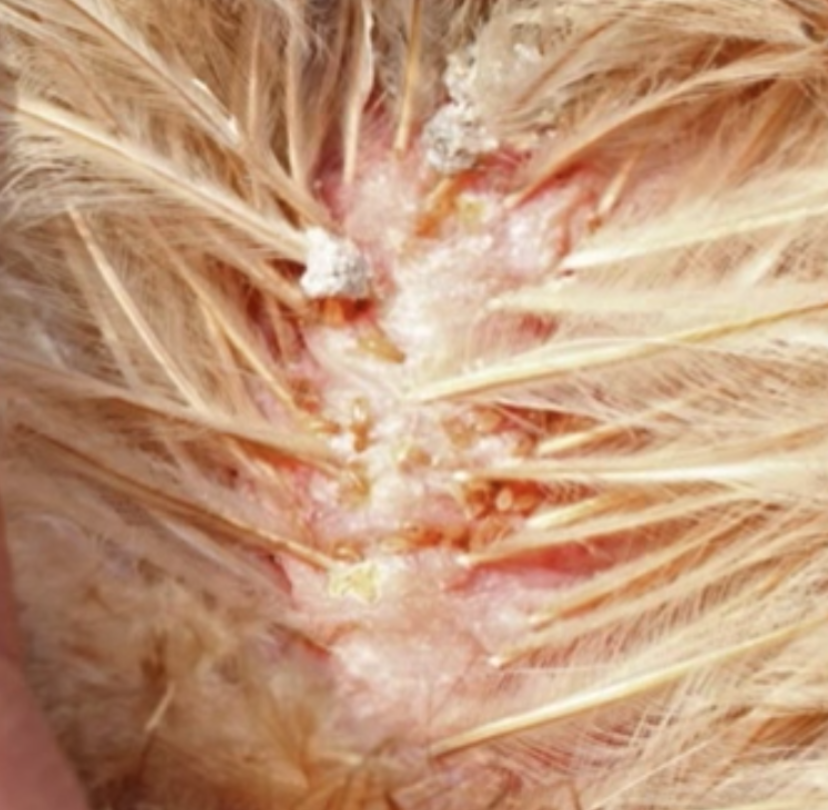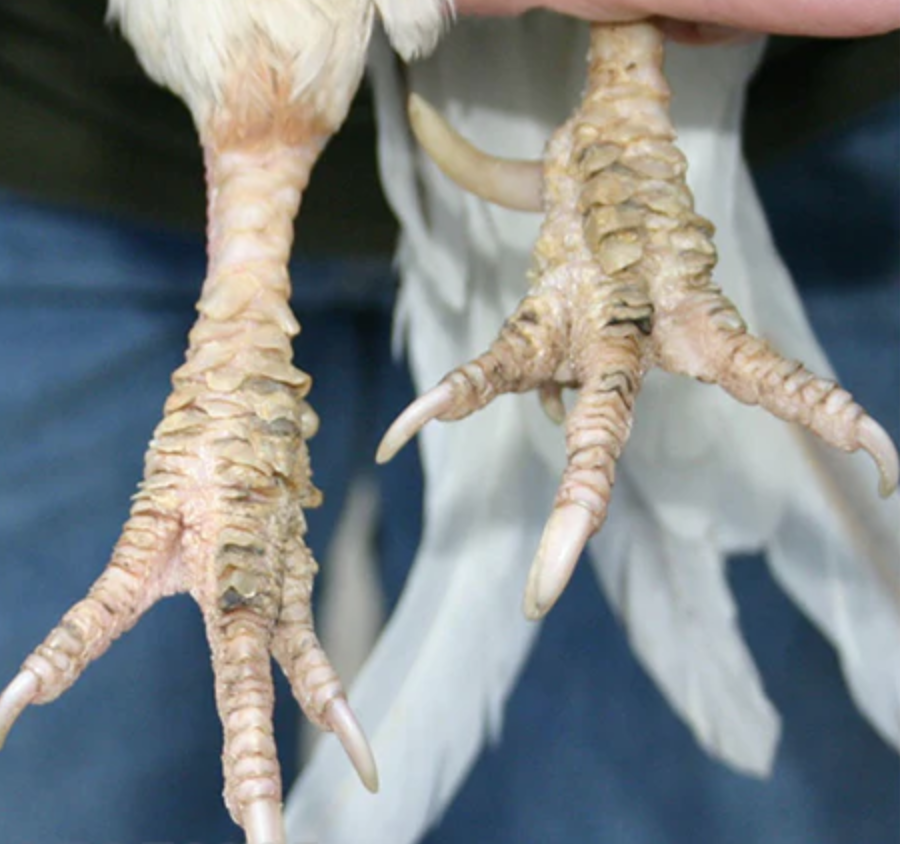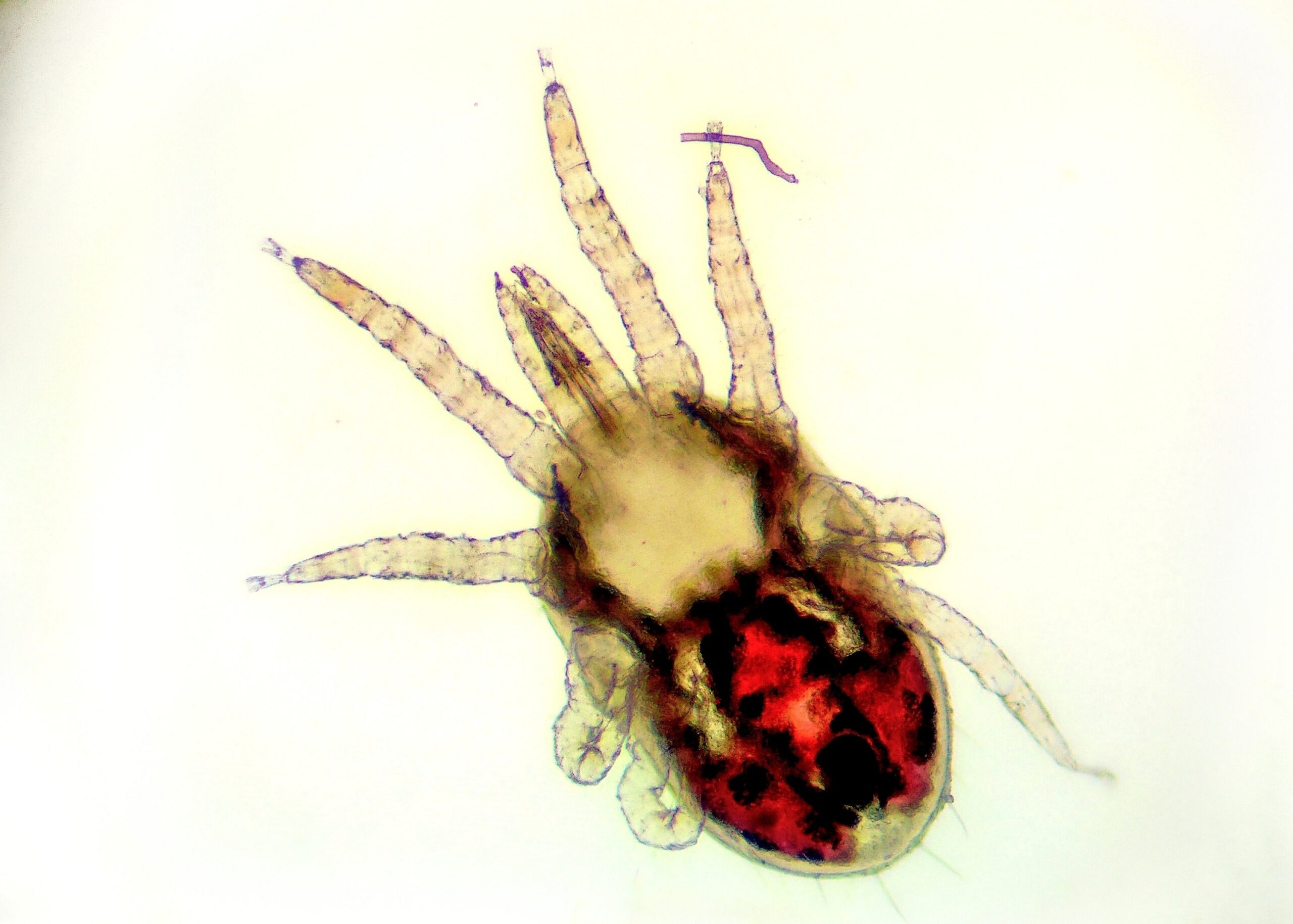Written by: Bria Osborne, OVC 2026
Edited by: Dr. Paisley Canning
Being aware of mites and how they affect your chickens is an important part of chicken health management.
What are Mites?
Mites are tiny bugs that can live in your coop as well as on your chickens. They are the most common external parasites found in small flock poultry. Northern Fowl mites (figure 1) and red roost mites (figure 2) are the most common types of mites that may be living on your chickens. Mites feed off your chicken’s blood; their preferred feeding spot is on and around the vent.

Photo credit: Merck Vet Manual
Figure 1: A Northern Fowl Mite infestation around vent area

Photo Credit: Nexles
Figure 2: A Red Roost Mite infestation at the base of feathers
Scaly leg mites are a specific type of mite (Knemidokoptes mutans). They are microscopic, living under the leg scales of your chicken. They burrow tunnels into the legs and leave waste behind. Therefore, crusty and thick-looking legs and feet are the result of scaly leg mites (figure 3). If scaly leg mites are not treated, lameness, pain, deformities, and loss of toes can result.

Photo Credit: Flyte So Fancy
Figure 3: A chicken with a scaly leg mite infestation
What are some signs that your chicken may have mites?
Regularly inspecting your bird’s feathers (especially around the vent) and skin (especially on the legs) allows you to get comfortable with what is normal vs abnormal for your birds. Be sure that you are fully parting the feathers to allow you to get a good look at the vent and feather base.
If your chicken is dealing with mites, their vent feathers may appear dirty due to the droppings and debris that the mites leave behind (figure 1). Your chicken may also have scabs near their vent, and mite eggs may be visible on the shaft of their feathers (figure 2). Anemia and death can result if mites are left untreated.
Preventing mites:
- Good Biosecurity practices:
- Regular cleaning of the coop (and dispose of any loose feathers as they may carry eggs), limit visits from other poultry keepers, keep wild animals at bay in your yard (keep feed secured, avoid using wild bird feeders), and quarantine new birds.
- Mite prevention/treatment prescribed by your veterinarian
- Provide good dusting areas for birds to maintain good feather health
If you suspect your chicken may have mites or are interested in mite prevention, contact Dr. Canning to form a treatment plan. You can contact the clinic at [email protected], or on facebook.com/upperthamesvs.
References:
The chicken chick: https://the-chicken-chick.com/
The chicken health handbook by Gail Damerow
WeCAHN and CAHSS small flock poultry course

